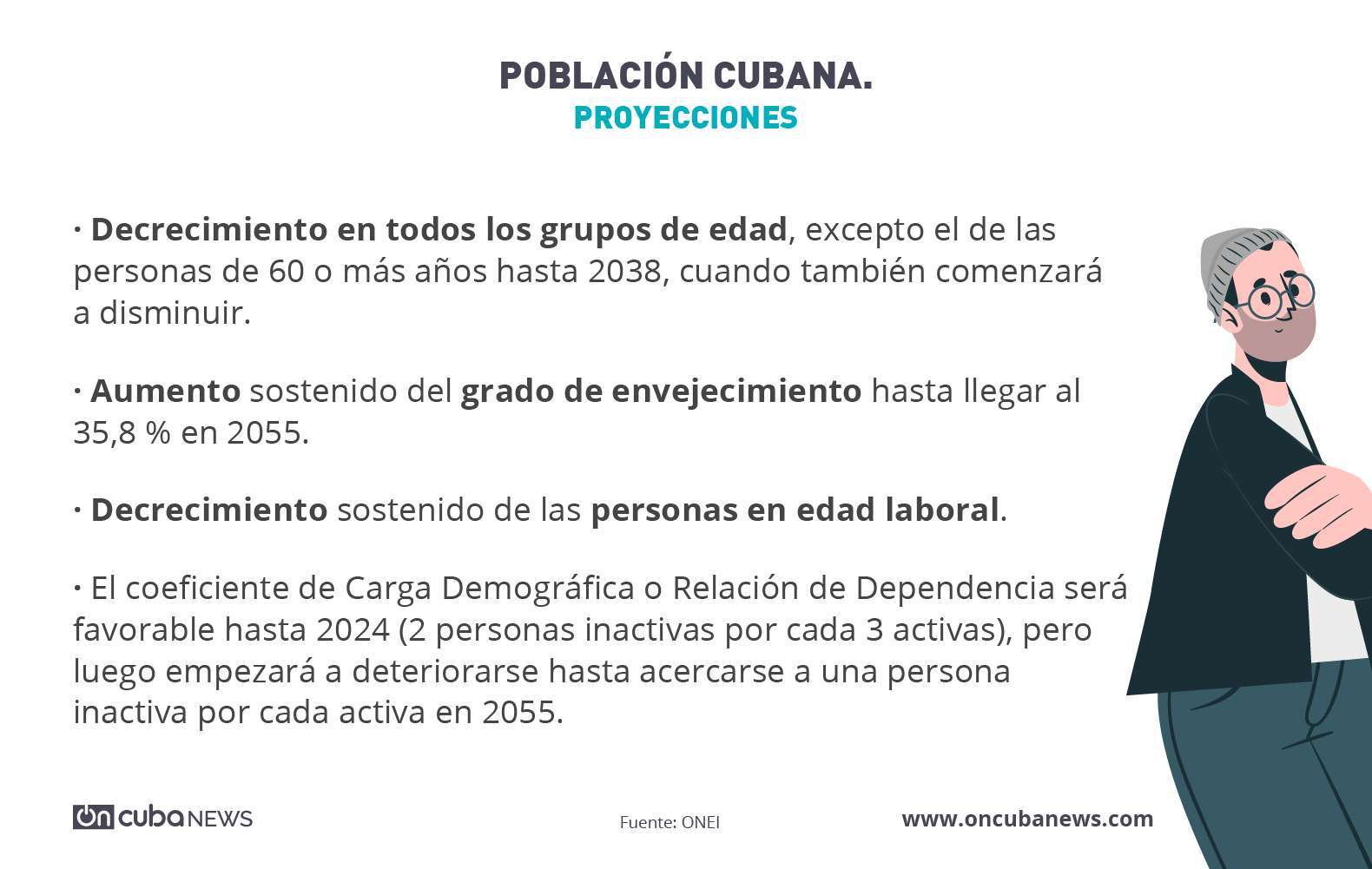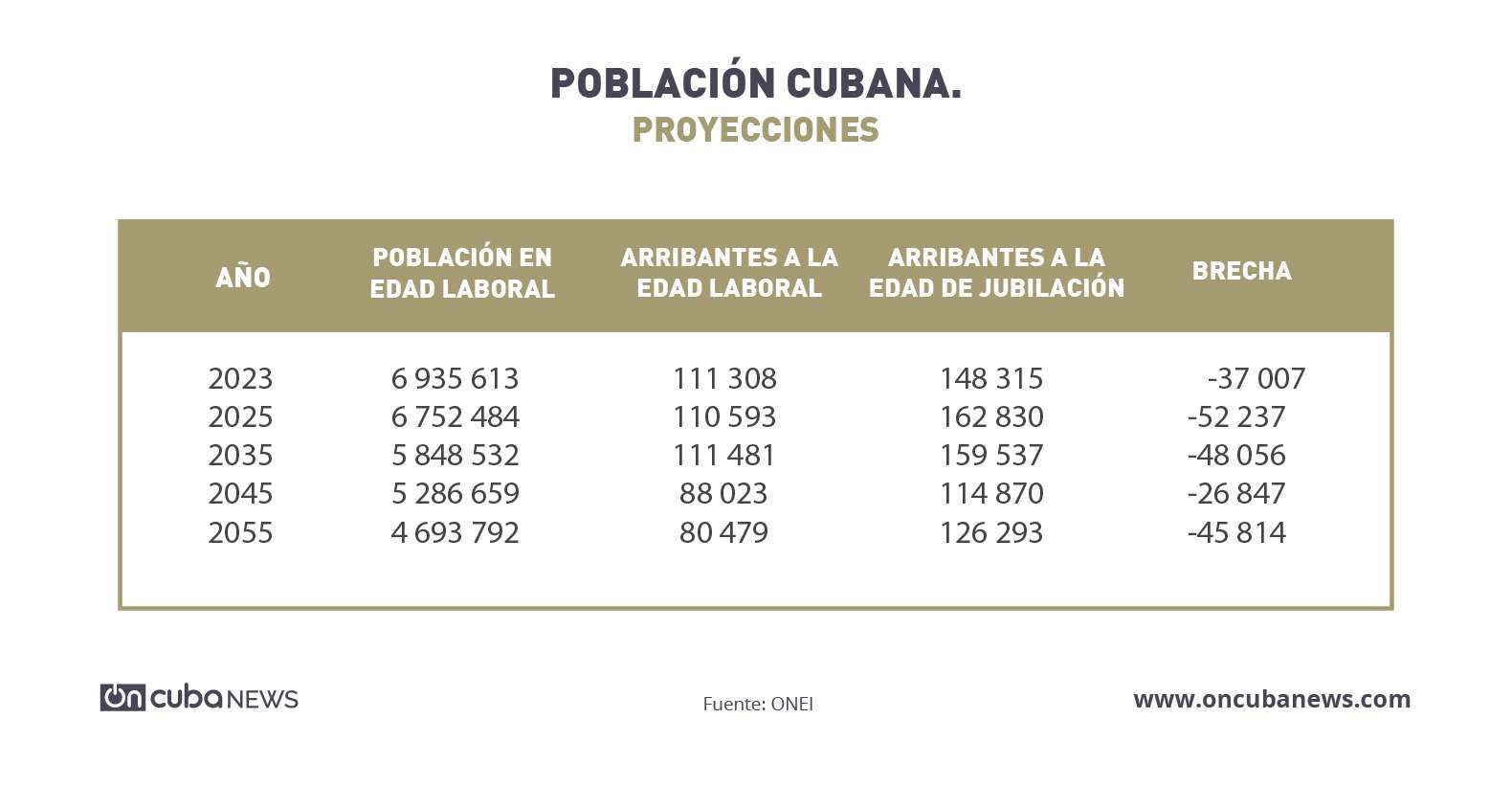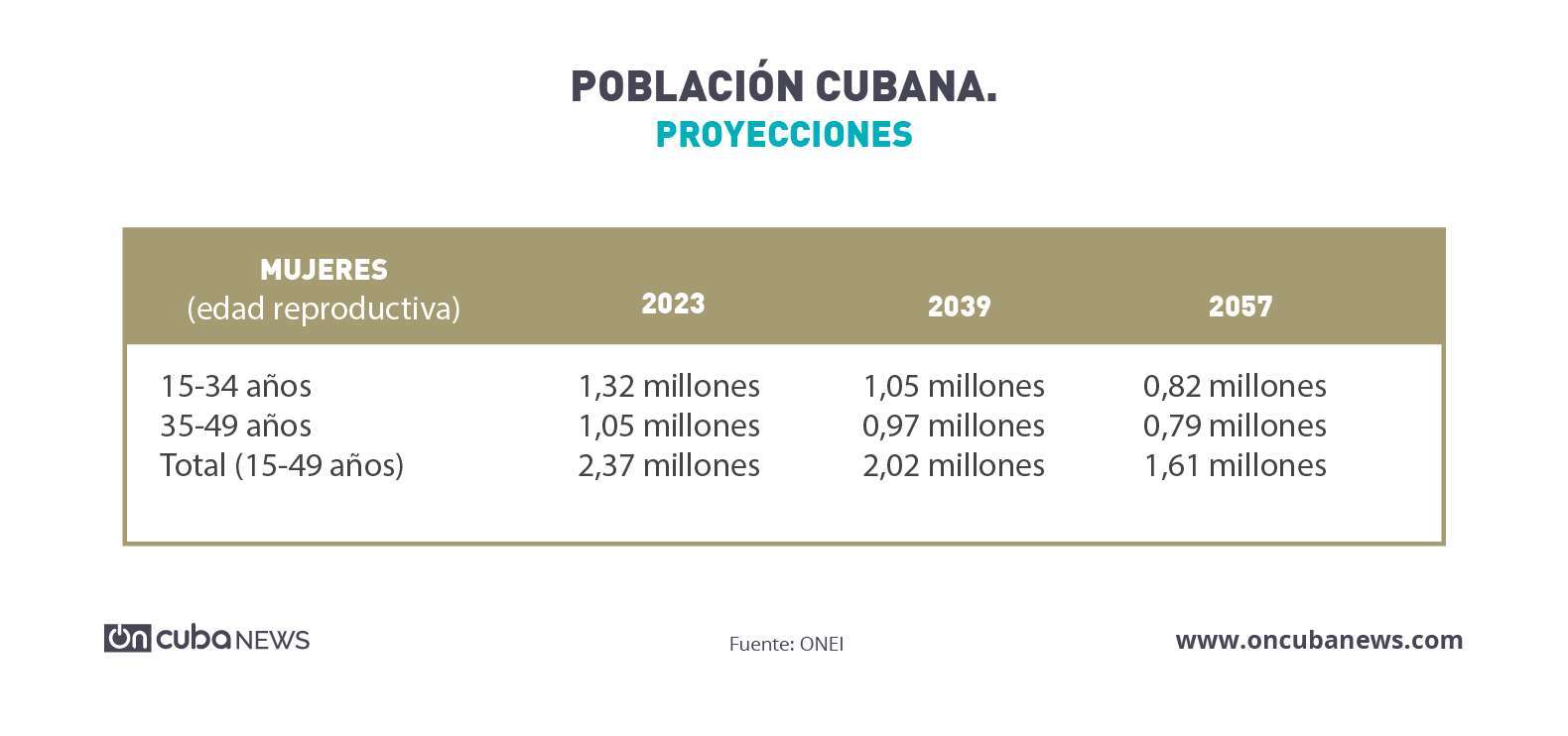It is unnecessary to have a crystal ball or boast fortune-telling skills to know that Cuba will never reach 12 million inhabitants. In fact, it would never have reached them, even if its current trend was not marked by reversal.
At least, that’s what the experts say.
According to what was explained a few days ago by Diego Enrique González, director of the Cuban Center for Population and Development Studies (CEPDE), in none of the scenarios that Cuban specialists have elaborated on for years, does the island’s population reach that number at any time.
In a scenario projected in 2008 and considered as a maximum, Cuba would reach 11.9 million inhabitants in 2030. Then it would remain around that number for a short time and it would begin to decline as of 2035, according to González at a press conference. And we already know that this projection will not be fulfilled either.
The Cuban population has been in a tailspin for several years. The drop is not abrupt, at least according to official figures, but it is sustained.

*Includes persons who are abroad, but who have not legally lost their residency.
All-time maximum
Preliminary
Since the country reached its all-time high in 2016, with 11,239,234 inhabitants, the statistics have gone backwards to stand at less than 11,100,000 last year. And this, even considering within the equation all Cubans who maintain their legal residence on the island, even when they are not physically in the country.
As we referred to in a previous article, based on what was explained to the press by officials of the National Office of Statistics and Information (ONEI), the official calculations are made taking into account the legal regulations in this regard. In other words, permanent emigrants continue to be considered within the Cuban population until the time period expires — at least two years — for them not to be considered as such.
This is a factor that, just as it masks the current demographic scenario in Cuba, also makes future projections more complex. Because if it is complex to follow the fluctuations of entries and exits day by day, it is much more difficult to predict the behavior of migratory flows in the medium and long term, beyond what today’s trends dictate and can be seen from a general perspective.
So, if we consider the above, it seems not cumbersome, but impossible, to answer with relative accuracy the question that gives the title to this work. However, science is not usually intimidated by challenges, and in the face of uncertainty and imprecision, it appeals to rationality and measurable margins from logic.
This is how Cuban demographers have recently done it to offer their forecasts on the island’s population, for the near and not-so-near future. And the panorama that these projections draw is, without a doubt, worrying.
Suffice it to say that the already complex current situation, as projected, will only worsen. The low birth rate, increasing aging and the decrease in women of reproductive age will continue as a trend on the island, with the logical and unfavorable repercussions that this entails.
At the current rate of decrease, and even taking into account the emigrants who have not lost their legal residence in the country, the Cuban population will not only never reach 12 million, but will fall below 11 million in just two years. And below 10 and even 9 million in the coming decades.
Meanwhile, the decline in the number of people of working age and the increase in the demographic burden coefficient — also known as the dependency relation, which measures the number of dependent people, by age, for every thousand active workers — will further strain the ropes of the battered Cuban socioeconomic scenario.
That is, according to Cuban experts, the demographic scenario that awaits the island. Then, we leave you with the projected figures, which were presented to the press a few days ago by the director of CEPDE in advance of a forthcoming official publication on the subject.

. Decrease in all age groups, except people aged 60 or over until 2038, when they will also start decreasing.
. Sustained increase in degree of aging, reaching 35.8% in 2055.
. Sustained decrease in working-age people.
. The coefficient of Demographic Burden or Relation of Dependency will be favorable until 2024 (2 inactive persons per 3 active), but it will later start to deteriorate to close to 1 inactive person per each avtive person in 2055.
Source: ONEI

PROJECTIONS
2025: drop to under 11 million inhabitants
2042: drop to under 10 million inhabitants
2051: drop to under 9 million inhabitants
Source : ONEI

Year / Population / Persons aged 0 to 14 / Persons aged 15 to 59 / Persons aged 60 and over
Degree of aging / Relation of dependency
Source: ONEI

Year / Working-age population / Those reaching working age / Those reaching retirement age / Gap
Source: ONEI

CUBA, 1970 to 2050
Demographic bonus
Source: ONEI

WOMEN (reproductive age)
Source: ONEI

YEAR / MEN AGED 60 AND OVER / WOMEN AGED 60 AND OVER / GAP / MEN PER 1,000 WOMEN
Source: ONEI










